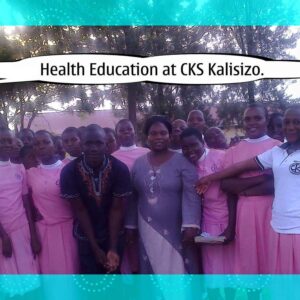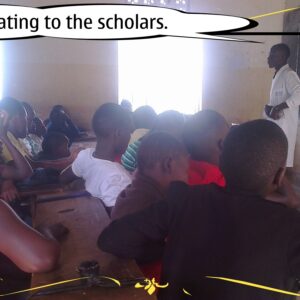Adolescents are young people between the ages of 10 and 19 years and are often thought of as a healthy group. Nevertheless, many adolescents die prematurely due to accidents, suicide, violence, pregnancy-related complications, and other illnesses that are either preventable or treatable. Many more suffer from chronic ill health and disability. In addition, many serious diseases in adulthood have their roots in adolescence. For example, tobacco use, sexually transmitted infections including HIV, and poor eating and exercise habits lead to illness or premature death later in life (Adolescent Health WHO, 2015).
Adolescents face many challenges about their reproductive and sexual health which are also similar to those of adults but may include additional concerns about teenage pregnancy, infection with STDs (HIV/AIDS, Syphilis, etc), and lack of adequate access to information and better health services.
Worldwide, around 16 million adolescent girls give birth every year, mostly in low- and middle-income countries. The causes of teenage pregnancy are diverse, ranging from rape by adults who provide basic needs to forced marriages due to material benefits from family members. Some adolescent girls do not know how to avoid becoming pregnant, are unable to obtain contraceptives, or are coerced into sexual activity. Teenage pregnancy, especially in developing countries, carries increased health risks and contributes to maintaining the cycle of poverty (wiki/Reproductive Health Adolescent Health, 2015).
The health education approach is a primary intervention to raise awareness on the best practices of how to prevent and control common infections and diseases among the communities (schools, households, patients onwards) with the least access to updated information on disease trends. We all know that the golden key in life is “prevention is better than cure”. Health education and talks to communities such as schools, households, and patients in the waiting rooms are vital as they create awareness that disease still prevails in the communities in which they live. Download the full report here
community-service-adolescent-health-5
- Group photo after a health education session to Christ the King girls Secondary School
- Health education session to St. Andrews Secondary School
- Group photo after a health education session to Christ the King girls Secondary School
- During a health education session to students at St. James Secondary School
- During an info session on sexual health education to scholars at Nile Citizen Secondary School
- After a session at St. James Secondary School
This empowers them with the knowledge to make informed decisions and improve life with few or free from infections. In schools, prevention of cross-infection from one student to another can be achieved if good health habits like abstinence from sexual contact are done or good personal hygiene is maintained. This can also reduce unwanted pregnancies and the acquisition of sexually transmitted infections/diseases in school-age-going children. Proper use of toilets and regular cleaning create an environment free from disease-causing micro-organisms e.g. Candidiasis and Urinary Tract Infections (UTI).
Abstinence from sex, staying in school, use of condoms plus other contraceptives, and prevention of early marriage can be a preventive measure to stop the widespread sexually transmitted infections such as HIV/AIDS, Syphilis, and Gonorrhea. Hepatitis C, Hepatitis B, Pubic lice, Trichomoniasis, UTIs, candidiasis (Thrush), Bacterial Vaginosis (BV), PID (Pelvic Inflammatory Disease), unintended pregnancies.
The campaign (health education) to secondary schools was in the form of A COMMUNITY DIALOGUE THAT ENSURED HIV/AIDS AND OTHER STDs, SEXUAL AND REPRODUCTIVE HEALTH (ADOLESCENT HEALTH) REMAIN A PRIORITY IN THE POST-2015, presented issues on sexually transmitted Diseases(STDs), adolescents Health and reproductive and sexual health. These students were aged 13-22 years and included both boys and girls who had attained secondary sexual characteristics such as breasts, hips, and deep and soft voices. Which exposes them to challenges concerning their sexual and reproductive health.








0 Comments